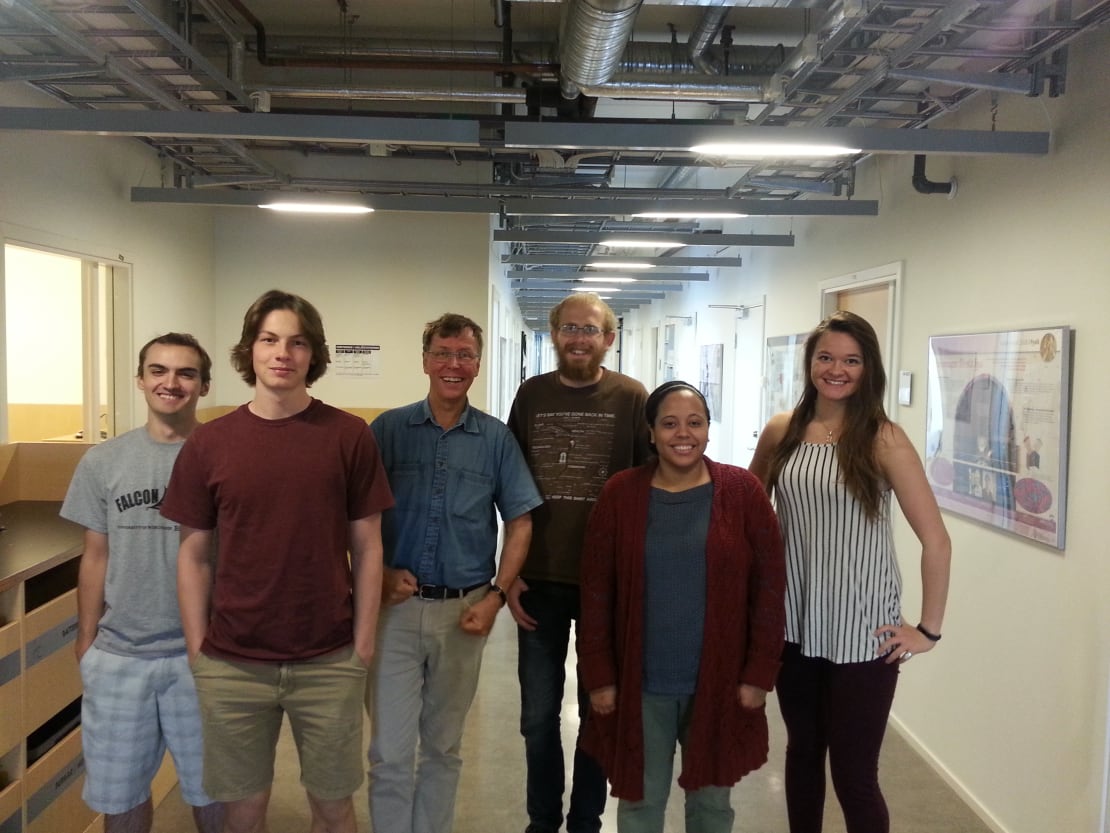International Research Experiences for Students (IRES) is a program funded by the National Science Foundation to support active participation of US undergraduates in international research projects. Vanessa Esaw, Nick Kulacz, Nick Jensen, Jack Nuckles, and Samantha Pedek participated in the IRES program through UW–River Falls to work on IceCube research for the summer at Stockholm University.

At the start of the summer, UW-River Falls student Nick Jensen and I set out to create a 1:1000 scale model of the IceCube detector using LEDs to represent DOMs. To do this, we needed a wide assortment of parts to construct the model from the ground up. We spent the first half of the summer trying to gather all the parts needed for building.
While we waited for these shipments to come in, I started to work on a side project with UW-River Falls student Sam Pedek under the guidance of Stockholm University researcher Dr. Chad Finley. He is exploring the possibility for a proposed next-generation of the IceCube Neutrino Observatory, IceCube-Gen2, to detect extragalactic supernovas. Currently, IceCube is able to see supernovas within our galaxy. Supernovas produce a large number of low-energy (around 10 MeV) neutrinos that shower the detector but are rarely detected by more than one DOM. There are so many neutrinos that the overall background noise rate is increased significantly. But when the source is extragalactic, the neutrinos are so spread out that the increase in background noise isn’t discernible. The thought was to use optical fiber instrumentation along with smaller, more efficient DOMs, so that extragalactic supernovas could possibly be detected.
To test this, we used a Monte Carlo program to simulate the propagation of particles. When neutrinos are produced in a supernova, about 90 percent of them undergo inverse beta decay, producing a positron. We simulated positrons as the source particle to propagate the Cerenkov radiation they produce. We looked first at an ideal case, with everything at 100 percent efficiency, to see if it was possible to detect extragalactic supernovas. The plan was to create a cylindrical volume of optical fiber material roughly the same diameter of a DOM and look for a difference in detection compared to the current instrumentation.
The long process of building up the model started with construction of all the circuit boards, LED strings, and framework. The circuit boards were a simple soldering job, the LED strings took a bit of struggling as they were double-sided and needed to be fit snuggly into the circuit boards, and the framework presented its own problems. At first, we thought the frame would be machined at an in-house shop, but we soon found out we were going to have to saw and drill it ourselves. This wasn’t a problem, but we were beginning to be short on time. In the last week of summer, we enlisted the help of Jack Nuckles to bring all the pieces of the project together. By the end, we had successfully built the complete physical model, but unfortunately we did not get to troubleshoot the coding aspect as we were completely out of time.
The summer IRES experience has taught me a great deal about being independent and goal-oriented. Even though we had tremendous help from both Stockholm University Professor Klas Hultqvist and UW- River Falls Professor Jim Madsen, Nick and I were challenged to come up with solutions to problems we did not anticipate. Looking back, I wish I would have started the summer with my own plan of action so that I could use my time more effectively. I am very pleased with my overall experience in Stockholm. It has built up my confidence in areas I was previously lacking and for that I am grateful.
See more stories featuring summer internships:
- The 2016 WIPAC-QuarkNet internship in brief
- High school interns benefit from tackling IceCube challenges
- Investigating excess of neutrinos from the galactic plane, summer research with IceCube
- Exploring the possibility of detecting extragalactic supernovae with IceCube-Gen2, summer research with IceCube